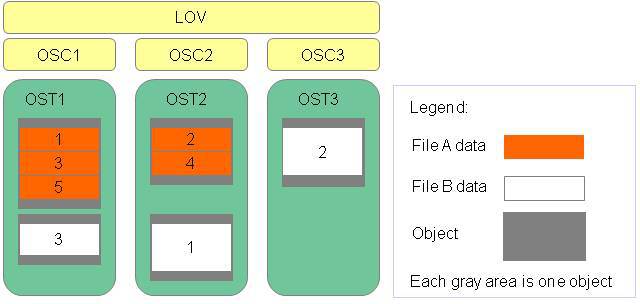Lustre Striping
In Lustre, a logical object volume serves as an umbrella for multiple Object Storage Clients (OSCs), each of which connects to an OST. Because of this structure, a single file may be split across several OSTs, in a technique called striping. Striping allows parts of files to be stored on different OSTs in a RAID-0 pattern. This is done to enable fast parallel I/O, just as in a RAID-0 disk array.
- The number of objects is called the
stripe_count. - Objects contain "chunks" of data that can be as large as
stripe_size.

With striping, the performance of a Lustre file system potentially scales with the number of OSTs available. Furthermore, the capacity of a Lustre file system equals the sum of the capacities of the storage targets.
These qualities result in two benefits:
- I/O rate to a file is the aggregate of I/O rates to objects.
- Max file size is not limited by the size of a single target.
For TACC systems, the total amount of Lustre storage is measured in petabytes, and the nominal aggregate data rate exceeds 150 GB/s. But this speed is split among all users of the system. Metadata access can be a bottleneck, so the MDSs need to have especially good performance (e.g., solid state disks on some systems).
CVW material development is supported by NSF OAC awards 1854828, 2321040, 2323116 (UT Austin) and 2005506 (Indiana University)